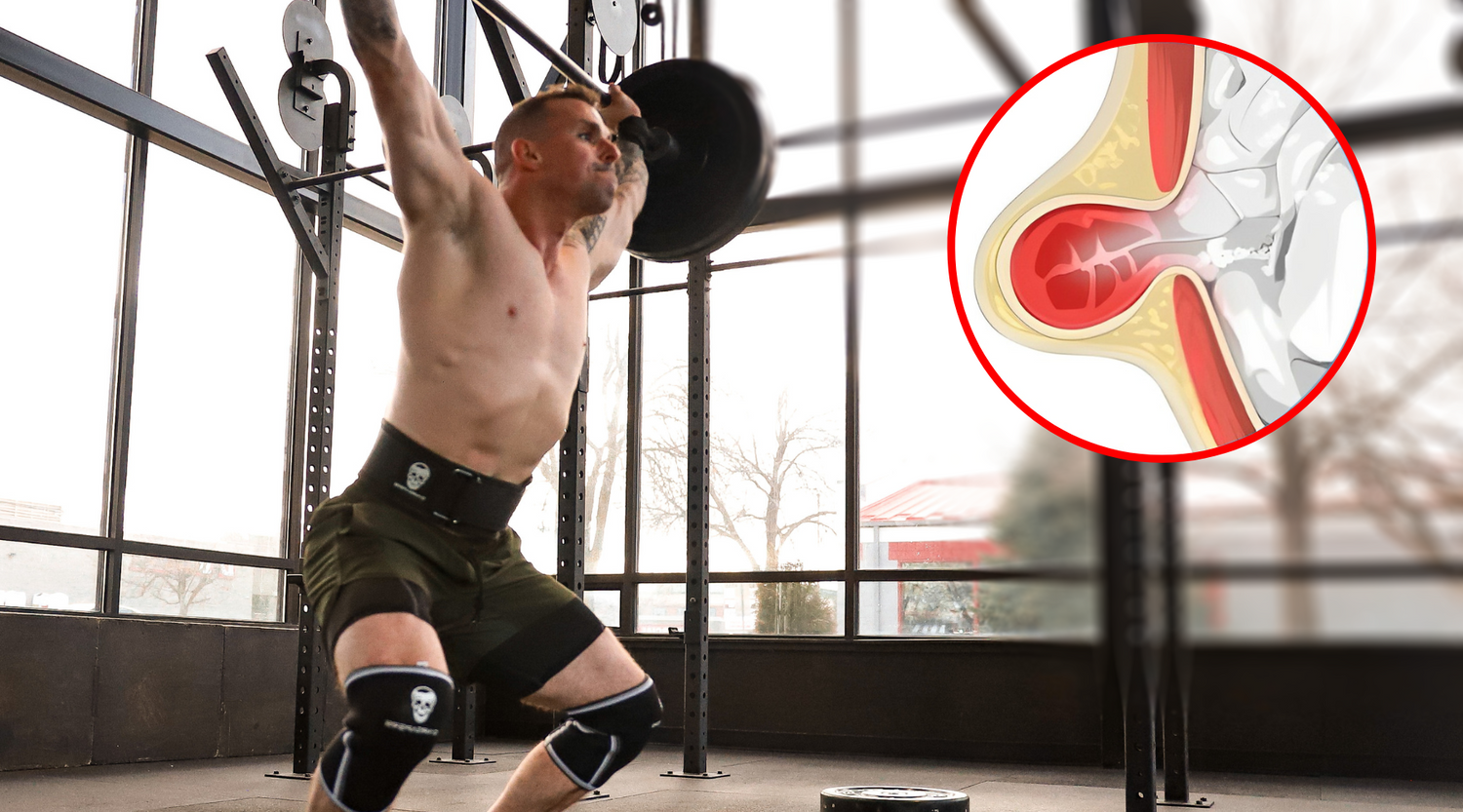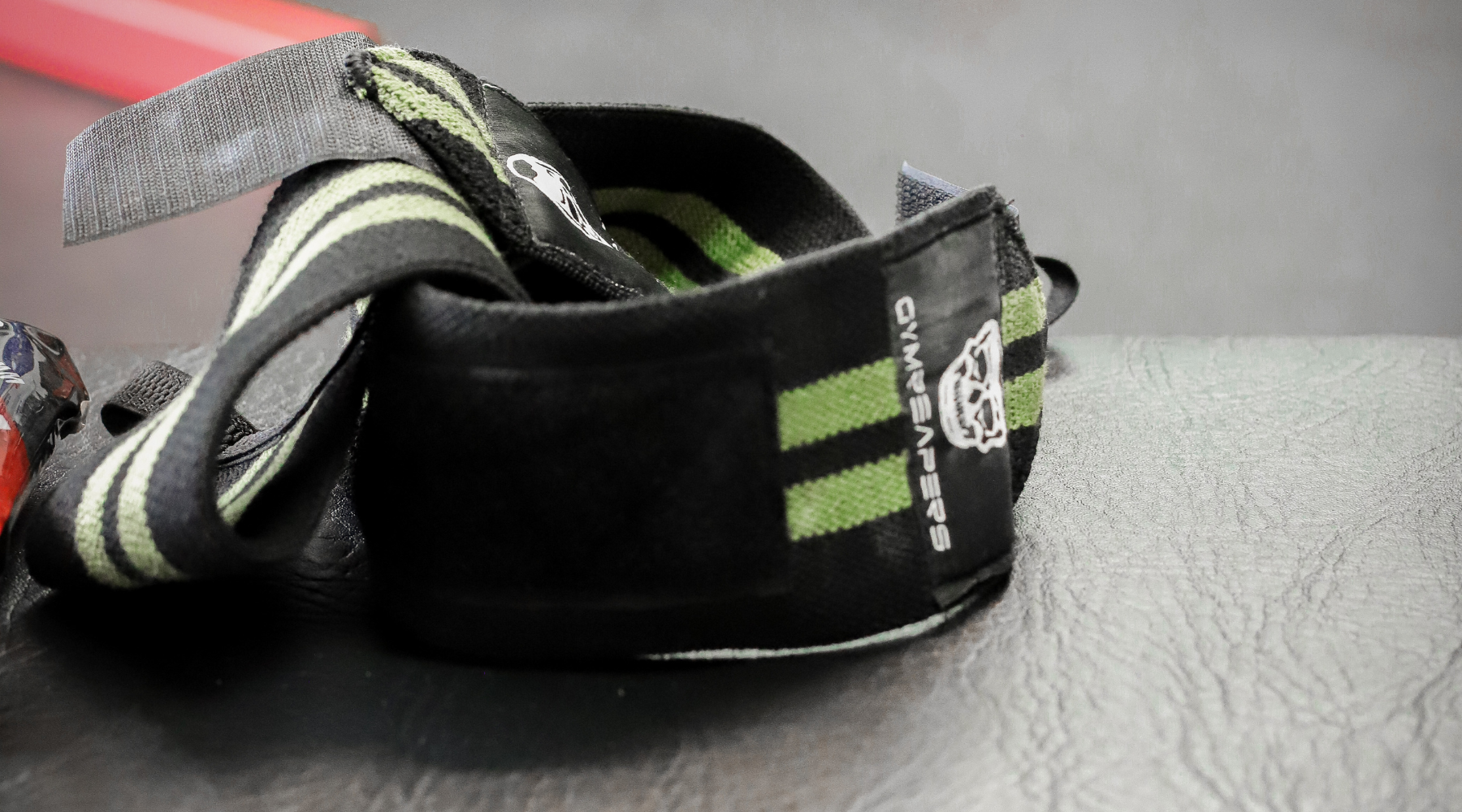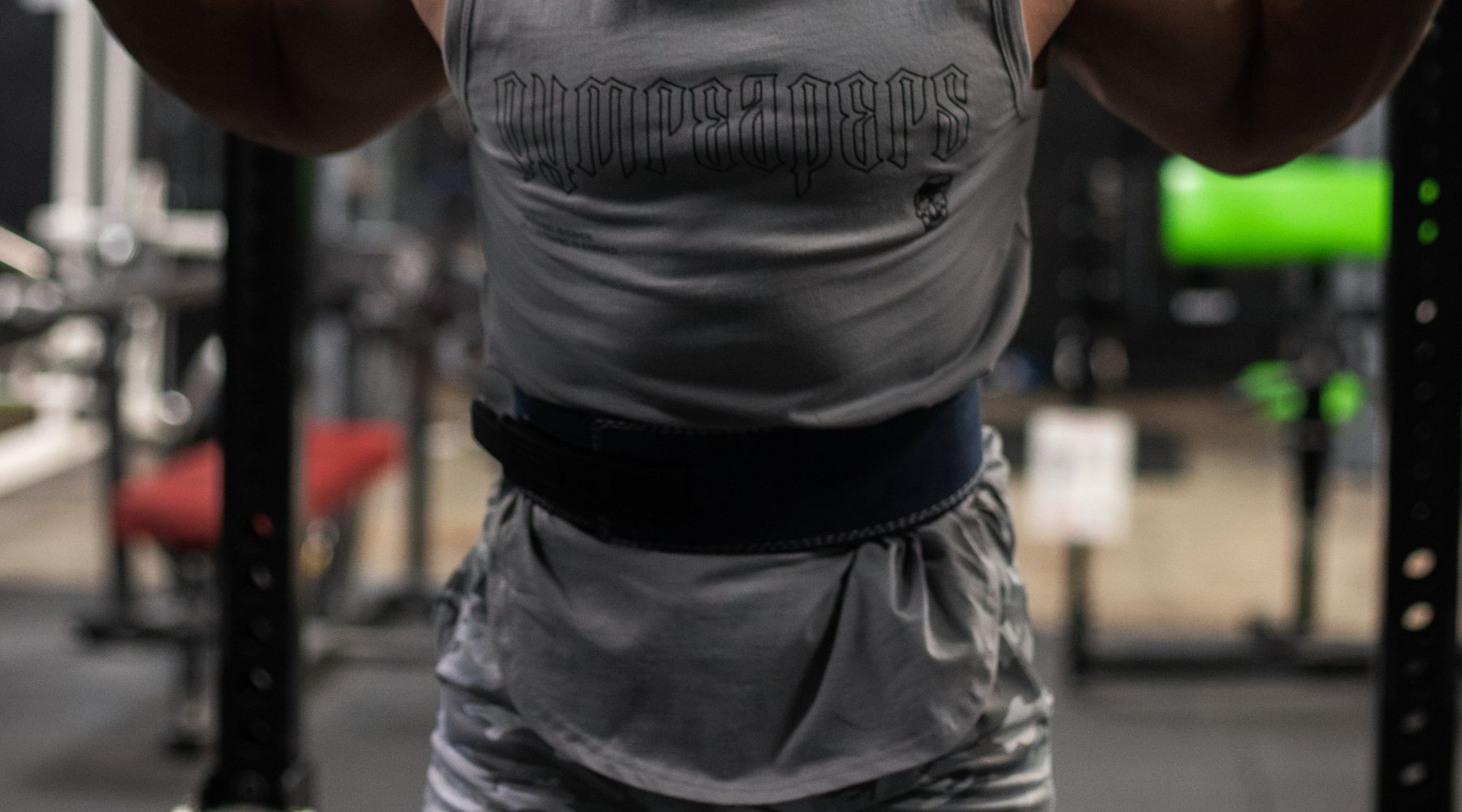Some people who are new to lifting heavy might be concerned about getting a hernia, and wonder whether a lifting belt can help prevent those types of injuries.
So, does a lifting belt prevent hernias? Yes, a lifting belt can be used as a tool to help lower your risk of suffering a hernia. Lifting belts help you create better bracing, positioning, and breathing mechanics, which can all help reduce your risk of getting a hernia.
Below, I will explain what a hernia is and why they are more common in strength athletes. Then, I will talk about the main functions of a lifting belt and explain how it can be used to avoid a hernia, or worsening an existing one.
Key Takeaways:
- The most common type of hernia for lifters is in your lower abdomen and is called an inguinal hernia.These are caused by a weak core and poor breathing technique while lifting.
- Hernias can be symptomatic or not. You typically only need surgery if you are in a significant amount of pain, and you can almost always train with asymptomatic hernias.
- Lifting belts can help improve your bracing, positioning, technique, and stabilization. All of these factors can reduce the risk of a hernia.
What Is A Hernia?
A hernia occurs when one of your internal organs pushes through a weakened section of your abdominal wall. They are typically seen in your lower abdomen.
They are common work and gym-related injury that occurs in activities that require a lot of heavy lifting or physical activity.
Most Common Type of Hernia: Inguinal Hernias
The most common hernia for lifters, and the general population as a whole, is the inguinal hernia.
This type of hernia is where an individual gets a bulge in or around their groin area or lower abdomen.
Typically, inguinal hernias happen when a part of the intestine pushes through a weak spot in the abdominal wall.
Your abdomen is covered in layers of muscle and strong tissue that help protect your internal organs, and this type of hernia creates a gap in that muscular wall that allows for a bump or protrusion to come forward.
Inguinal hernias can be symptomatic, where they cause noticeable pain and have a visible bulge. However, they can also be asymptomatic and harder to detect, since they then will not cause pain or create a bulge
Most research states that asymptomatic groin hernias in healthy adults do not require surgical repair).
This means that, although hernias may seem scary and very worrisome, the medical consensus is that these types of hernias in your lower abdomen should only be operated on if they are painful or affecting your quality of life.
Hernias and Lifting Heavy Weights
Hernias can have many reasons for occurring, but as I stated earlier, they can be a common injury for those who frequently lift heavy weights or participate in sports.
However, there is also a strong genetic component that factors into someone’s risk of sustaining hernias, which can make some people more likely than others to be at risk of a hernia.
Unfortunately, this is often outside of someone’s control.
Genetic predisposition or not, you should know that the medical theory behind suffering inguinal hernias when lifting heavy or with poor technique is that the abdominal wall can get ruptured if the pressure within your abdomen is high enough.
It is important to note that this level of excessively high outward pressure is not the same as safely creating intra-abdominal pressure when properly bracing into a lifting belt.
Rather, this excessively high pressure of the abdominal contents into and through the abdominal wall typically occurs with improper breathing technique and improper core muscle activation.
Because of this, all lifters need to know how to complete their lifts with proper technique and correct bracing to ensure that they do not suffer a symptomatic hernia, or that they do not make any underlying asymptomatic hernias any worse.
Will A Lifting Belt Prevent A Hernia?

Intra-abdominal Pressure Explained
Before we discuss whether or not a lifting belt will help prevent hernias, we need to understand what a lifting belt does.
There are many reasons to use a lifting belt, but the main two are for injury prevention and bracing.
Lifting belts help athletes maintain a neutral torso position while completing their lifts, which can drastically reduce your risk of injury when your lower back is loaded heavily in a flexed position.
Additionally, lifting belts also help athletes tremendously when it comes to creating a tighter brace.
Essentially, the research suggests that belts help you recruit more of your core muscles, which then allows you to create a tighter brace through additional intra-abdominal pressure in your core.
This pressure is what helps lifters move more weights in compound lifts like the squat and the deadlift.
That is because your core, when contracting and pushing into a lifting belt, essentially acts like a pressurized cylinder.
This cylinder, when able to remain tight and stable and keep its proper shape, can support an immense load.
However, if you allow the cylinder to crumple and lose its shape, it can lose all of its strength.
Linking Intra-Abdominal Pressure to Hernias
As we talked about earlier, hernias are most frequently caused by extremely high outward pressure from within your abdomen.
This means that weight lifters are more susceptible to developing hernias.
This is because, over time and plenty of instances of exerting sudden force or strain when lifting heavy weights, any existing weaknesses in the muscle lining of your abdomen can get exposed.
On top of this, extreme pressure is worsened by poor technique with heavy loads.
However, we also know that weight lifting belts help alleviate core strain, create a stronger and safer brace, and usually help engage the core muscles in a way that promotes better technique, posture, and spine stabilization.
These benefits all stem from enhancing intra-abdominal pressure, and are the main reasons lifting belts can aid in preventing injuries.
Therefore, it is much more likely that a lifting belt will never directly cause a hernia, and is will help prevent hernias.
- Related Article: My Lifting Belt Gives Me Bruises: 4 Reasons & How to Fix
Can You Wear A Lifting Belt If You Already Have A Hernia?
Hernia Truss vs Lifting Belt
To begin this discussion of wearing a belt when you already have a hernia let’s first distinguish between a hernia belt, or a truss, and a lifting belt.
A truss is a supportive undergarment, mostly for men, that is designed to keep the protruding tissue in place and relieve your discomfort from your hernia. A truss can help temporarily relieve pain from a symptomatic hernia, but it does not treat the hernia.
Note that trusses are only used when hernias, typically inguinal hernias, have become symptomatic. This also means that situations that require the use of a truss can likely only be rectified by surgery.
In contrast, a lifting belt is not an undergarment and is not solely a hernia management tool.
Lifting belts are worn above your waist, typically right below your rib cage, and mainly serve to enhance your core engagement, prevent injuries, and create more abdominal pressure.
Wearing a Lifting Belt with a Hernia
I will preface this section by stating that if you have a symptomatic hernia in which you are experiencing pain and discomfort, I recommend consulting your doctor and only partaking in activity levels that are comfortable and pain-free.
That said, if you have an inguinal hernia but notice no pain or discomfort, you are fine to continue wearing a lifting belt with your hernia.
Again, hernias occur and are exacerbated by excessive outward force from your abdomen, and this typically occurs when lifting heavy with poor technique and improper breathing and bracing.
Using a lifting belt is an ideal way to minimize the chances of poor technique, and utilizing a lifting belt often provides active feedback that helps lifters learn what a proper breath and brace feels like.
Because of this, wearing a lifting belt with an asymptomatic hernia is likely better for your long-term health and may aid in reducing discomfort.
Remember, belts should not be worn simply to protect against a hernia.
However, the enhanced rigidity to the spine and torso stability will help prevent aggravating your hernia, and will also aid in preventing spinal disc herniations.
Other Ways To Prevent A Hernia While Lifting Weights
Below, you will find some other tips for preventing hernias while lifting heavy weights that you can implement in addition to wearing your lifting belt:
Strengthen Your Core
Strengthening your core by consistently performing ab exercises and core stability work can directly aid in minimizing your risk of inguinal hernias.
Remember, inguinal hernias are caused by tissue pushing through a weak spot in your abdominal muscles, near your groin. By strengthening your abs with exercises to specifically target these areas, you can actually prevent inguinal hernias from forming.
Here are some example exercises that I recommend specifically for strength athletes:
- Planks
- Pallof Presses
- Reverse Squats
- Deadbugs
Learn the Valsalva Maneuver

The Valsalva maneuver is a breathing technique that increases pressure throughout the abdominal cavity, which results in increased activation of the core musculature and increased rigidity in your spine and brace.
It is a great line of defense in preventing lifting-induced hernias and should be performed when attempting heavier lifts.
This is typically the breathing technique that is taught when a lifter is learning how to use a lifting belt property and should be used whenever a lifter is pushing themselves in their compound lifts.
I want to note that performing the Valsalva maneuver may aggravate a symptomatic hernia, which means that you may want to avoid performing it if that is the case. This is an individualized consideration, and you should always listen to your body and doctor to avoid worsening an injury.
Essentially, performing the Valsalva maneuver means you are implementing an internal bracing cue.
It helps you increase core rigidity, which allows you to more effectively transfer power to your limbs when lifting heavy loads. It also helps prevent unwanted energy leaks, which can rob you of strength and may result in form breakdowns that can get you injured.
Be Mindful of Your Technique in Certain Exercises
Certain exercises leave lifters much more at risk of hernias than other exercises.
That being said, it is important to know which exercises will naturally put more pressure on your abdominal wall, so that you can be more cautious and deliberate in your approach to these exercises.
As an example, squats and deadlifts are the main compound movements that place an excessive amount of pressure on your abdominal wall.
I have seen more serious squat injuries on someone’s warmups than on their top set or max attempts.
As such, I recommend always taking these movements seriously, regardless of the weight of the bar.
Respect your body and the movement, and make sure to give these types of lifts your full focus when completing them.
Eat Your Vegetables
As odd as it may sound, constipation and trying to force a bowel movement are also leading causes of increasing your risk of suffering a hernia.
As such, don’t focus only on protein!
Make sure to get plenty of vegetables into your diet. Fiber-rich foods can help alleviate constipation and support healthy bowel movements, which increase the risk of excessive abdominal pressure when you are outside the gym.
Frequently Asked Questions
Can A Tight Belt Cause A Hernia?
Yes! If your belt is too tight, you may not be able to brace effectively and may lose position when squatting or deadlifting. This can then lead to technique breakdowns and excessively high outward pressure that can cause a hernia.
Should I Stop Lifting Weights If I Have A Hernia?
No. While I always recommend listening to your body and your doctor, I also never recommend completely stopping lifting weights if you have a hernia. This is especially true if you have no symptoms. Often, unless there is severe pain, hernias will not get worse if you are using proper technique and breathing patterns.













Leave a comment
All comments are moderated before being published.
This site is protected by hCaptcha and the hCaptcha Privacy Policy and Terms of Service apply.